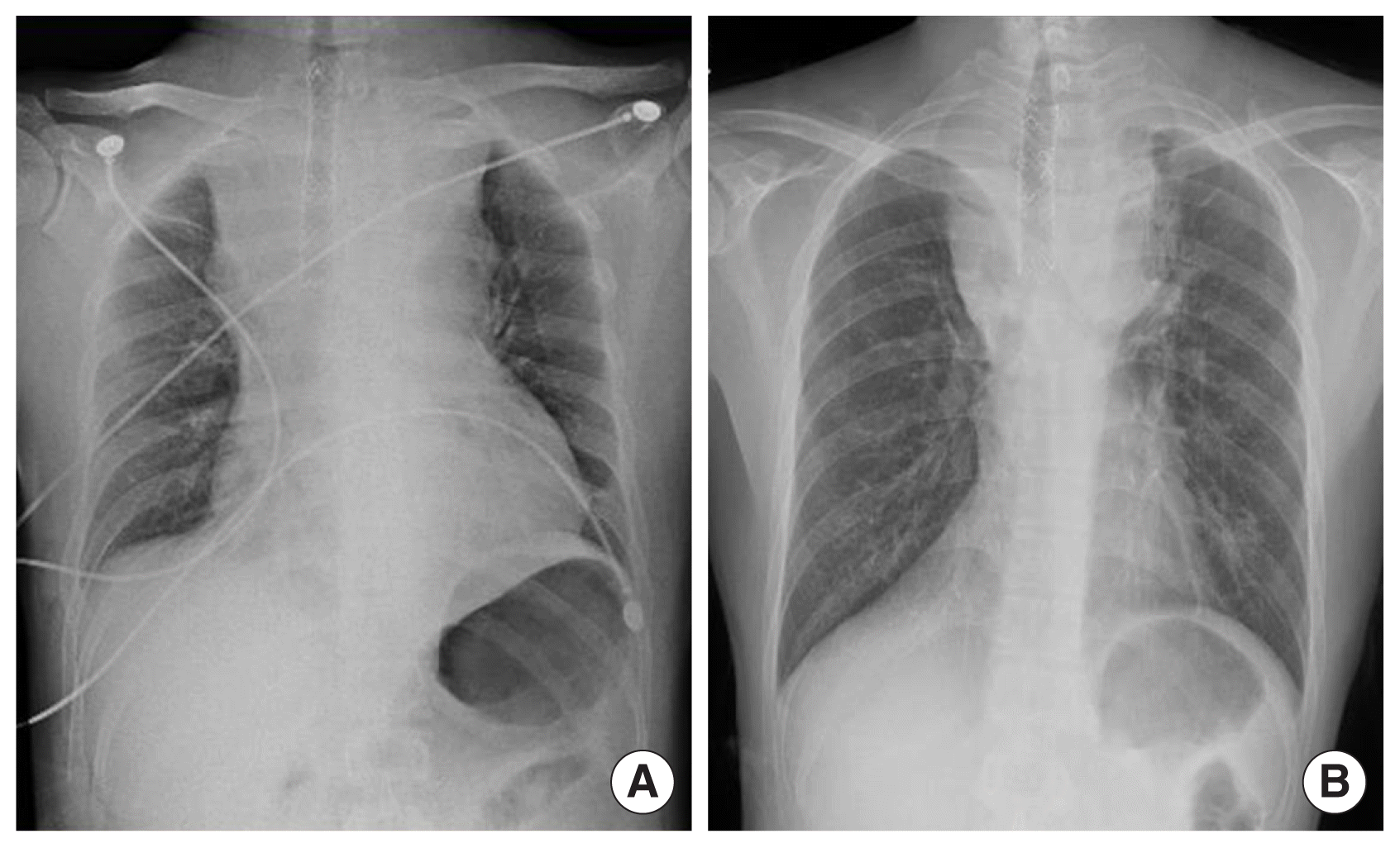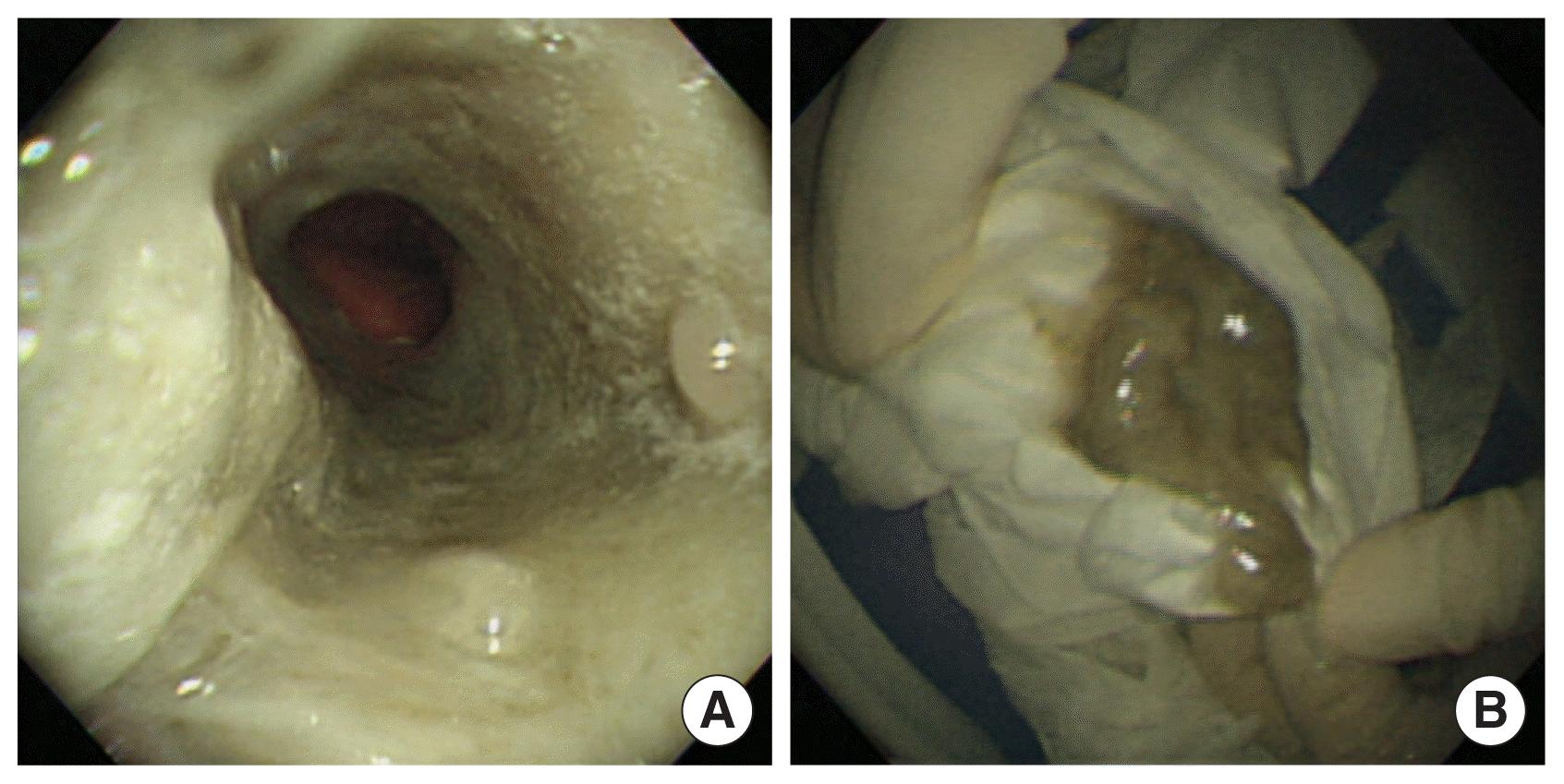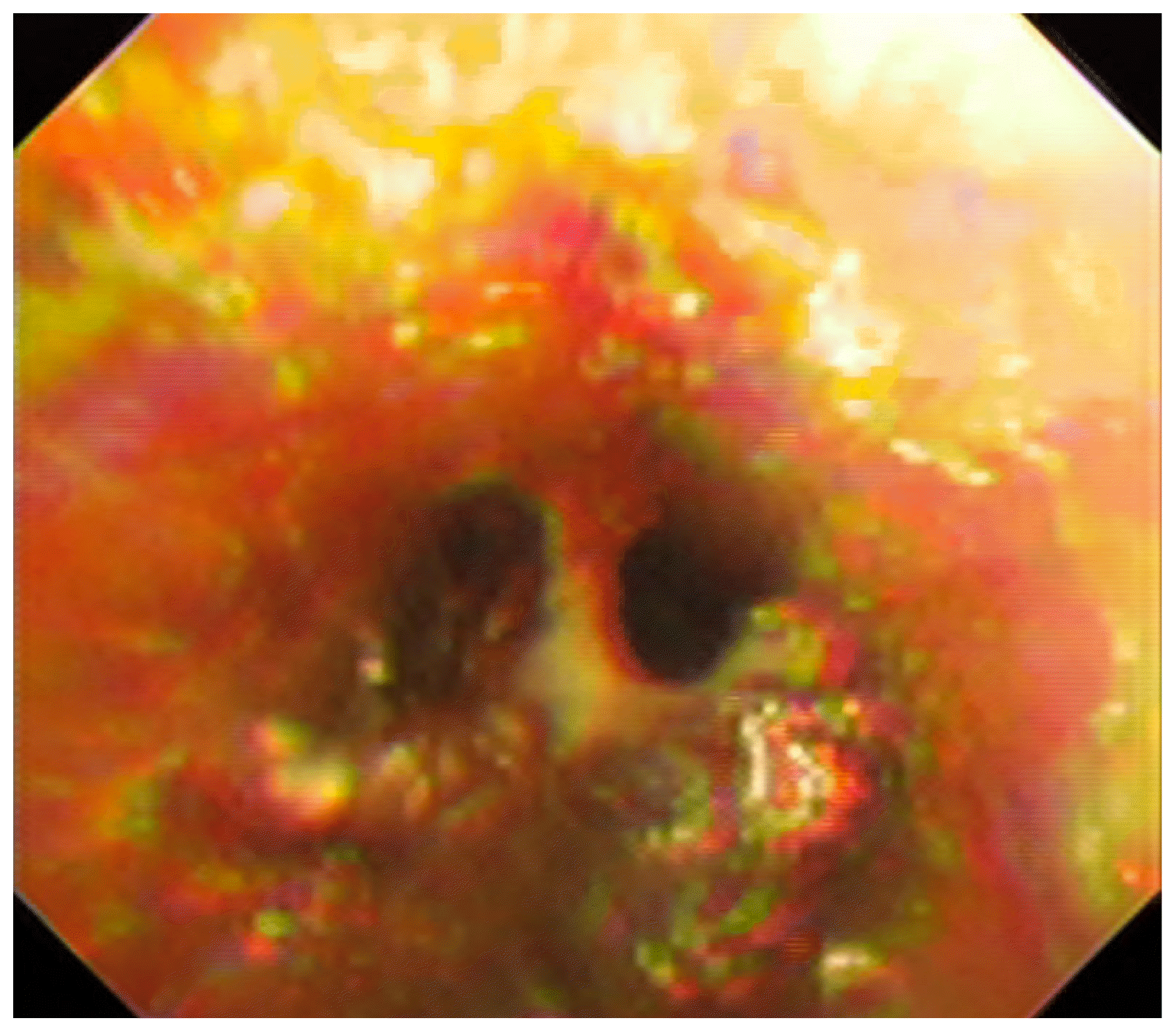INTRODUCTION
Airway stenting is a common technique in malignant central airway obstruction for dyspnea [1–4]. The effectiveness of airway stenting in improving quality of life and resolving dyspnea has been proven [1,2,4–9], and it has been reported to be technically successful in 90% of cases [9]. The possible complications of airway stenting are growth of granulation tissue, accumulated secretions, fracture or migration of the stent, airway wall perforation, and infection [1,2,7,10–13]. There is a lack of reports covering life-threatening secretions caused by this procedure; here, we report the case in which a patient experienced life-threatening complications induced by accumulated secretions after airway stenting.
CASE REPORT
A 33-year-old man was referred to the respiratory clinic of Seoul National University Hospital because of resting dyspnea. The patient had been diagnosed with a massive large cell neuroendocrine carcinoma in the anterior mediastinum 2 years previously, and he had been receiving chemotherapy and radiation treatment. However, the tumor progressed in the anterior mediastinum, causing extensive extrinsic compression of the whole trachea (Fig. 1).
Urgent airway stent insertion was performed under general anesthesia using a rigid bronchoscope. Two silicon-covered metal stents (Hercules Airway model no. AW-10–40; S&G BIOTECH Inc., Seongnam, Korea) were successfully deployed in the whole trachea, and dyspnea was immediately relieved (Fig. 2). However, 1 week after inserting the stents, the patient complained of worsening dyspnea, cough, and sticky respiratory secretions. Subsequently, bronchoscopy revealed impending obstruction of the stents by accumulation of the very sticky secretions (Fig. 3). Frequent bronchoscopic toileting was therefore required, and this complication was well-controlled for several months. After 7 months, the carina gradually became compressed; therefore, silicon Y-stent revision was performed. After stent revision, regular bronchoscopic toileting was still required for the accumulated sticky secretions.
Unfortunately, about 4 months after inserting the Y stent, he was admitted to the intensive care unit (ICU) for intubation, as the respiratory secretions had become life-threatening. Dense, thick respiratory secretions obstructing the end of the stent were detected upon bronchoscopy (Fig. 4). Emergency bronchoscopic removal of the secretions was performed in the ICU, and the patient was discharged without any sequelae.
DISCUSSION
It is inevitable that inserting stents in the airway triggers inflammatory reactions. Generation of massive secretions after airway stent insertion is caused by airway irritation of the foreign body, and the retention of mucous secretions is caused by impaired mucociliary clearance [4,14]. Although secretions are known to be a common complication after inserting airway stents, there have been no reports covering a threat to life caused by secretions after inserting airway stents.
Previous studies dealing with life-threatening complications of airway stent insertion have included airway perforation, severe infection, bleeding, stent migration, and airway obstruction induced by granulation tissue. Secretions are considered to be a common complication, but not to be a serious complication [1,14]. Excessive retention of secretions is known to occur in 10% to 40% of cases [1–3,11,14]. Numerous studies found that excessive secretion is prone to occur in silicone stent than metallic stent. This is attributable to the mesh frame of metallic stents, which permits mucociliary clearance more easily [1,2,11,14,15]. In our experience, secretions, regardless of severity, occur unexceptionally so that clinicians have to pay attention to every case.
As the use of airway stents increases, maintaining the stents has become increasingly important. Appropriate management and follow-up are essential for long-term maintenance. As we noted in this case, short-term bronchoscopic follow-up is indispensable for evaluating the amount and consistency of secretions. Thereafter, regular bronchoscopy can be performed if the secretions are found to be particularly thick and copious in the first bronchoscopy. Adequate hydration and mucolytics should be considered, and if needed, application of saline or mucolytics by nebulizer can also be used. Most importantly, physicians should constantly follow-up on symptoms and perform careful physical examination. Additionally, timely antibiotics and infection control are occasionally needed, because infection is directly associated with secretions. In severe cases, regular bronchoscopic toileting should be performed for extended periods. Our report is significant in that it presents an approach to optimal management for this life-threatening condition.
In conclusion, physicians should be aware of possible life-threatening complications due to secretions after insertion of airway stents. Further attention should now be given to preserving these stents from secretions, as this complication could be overcome by appropriate post-procedural management.















